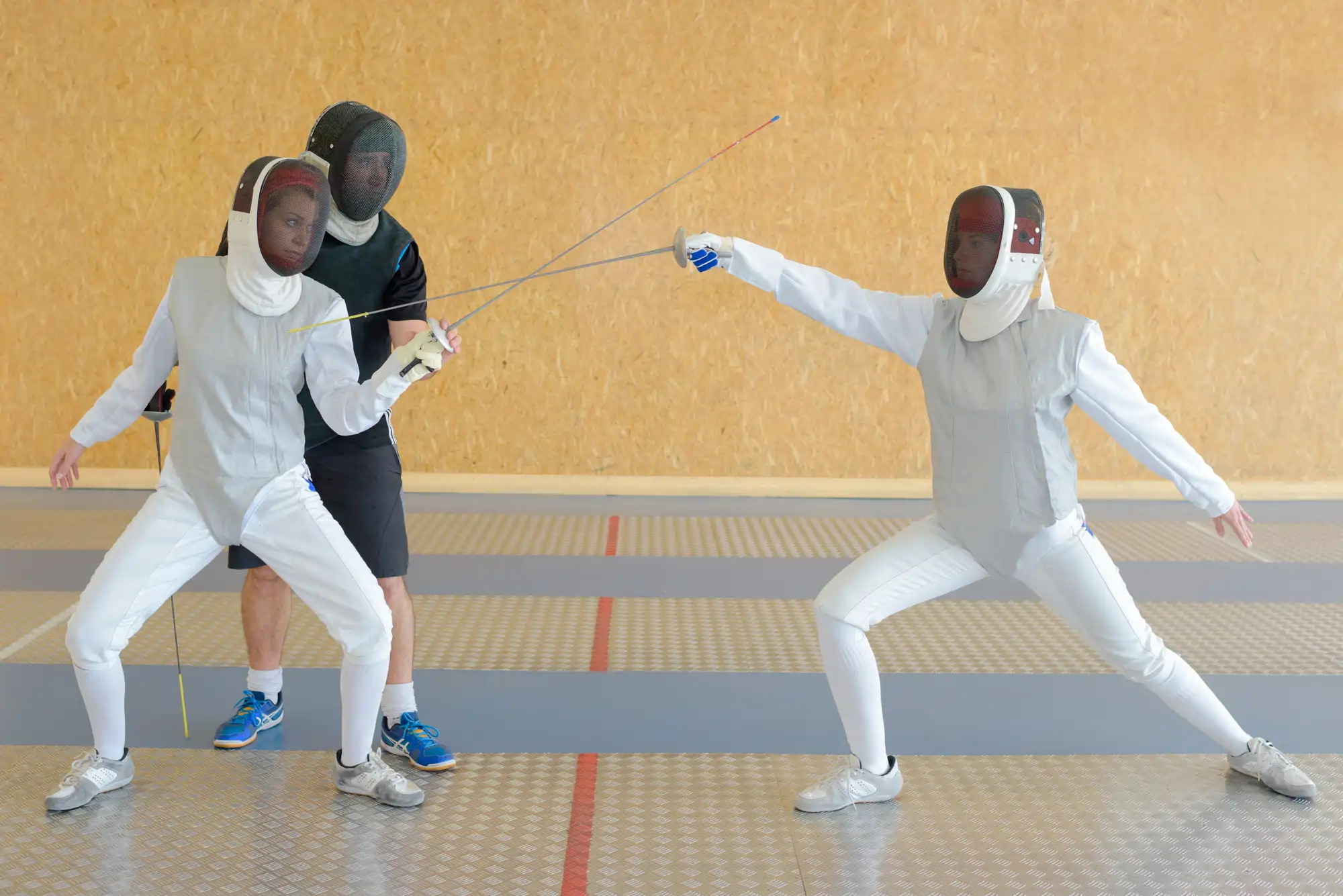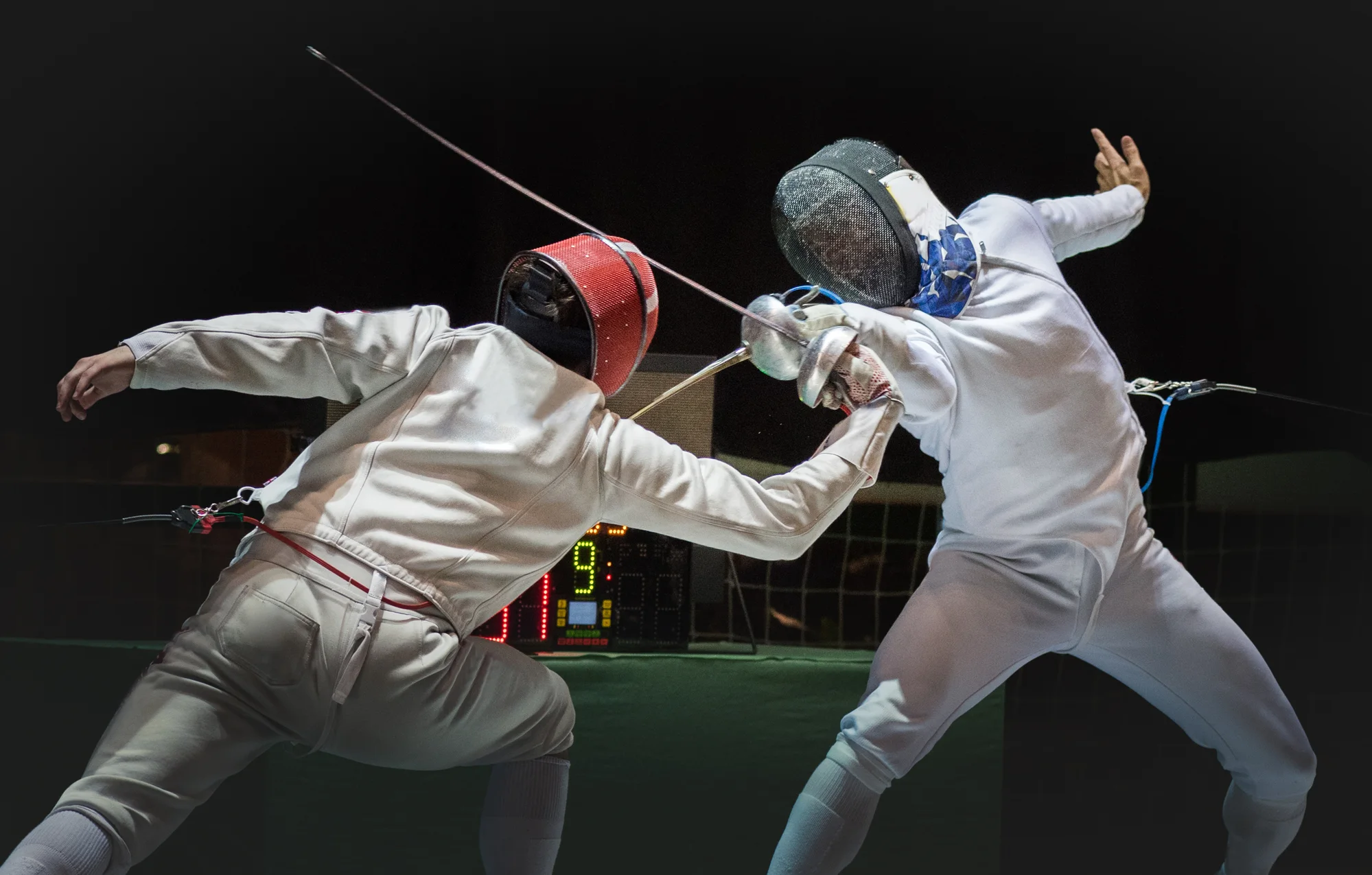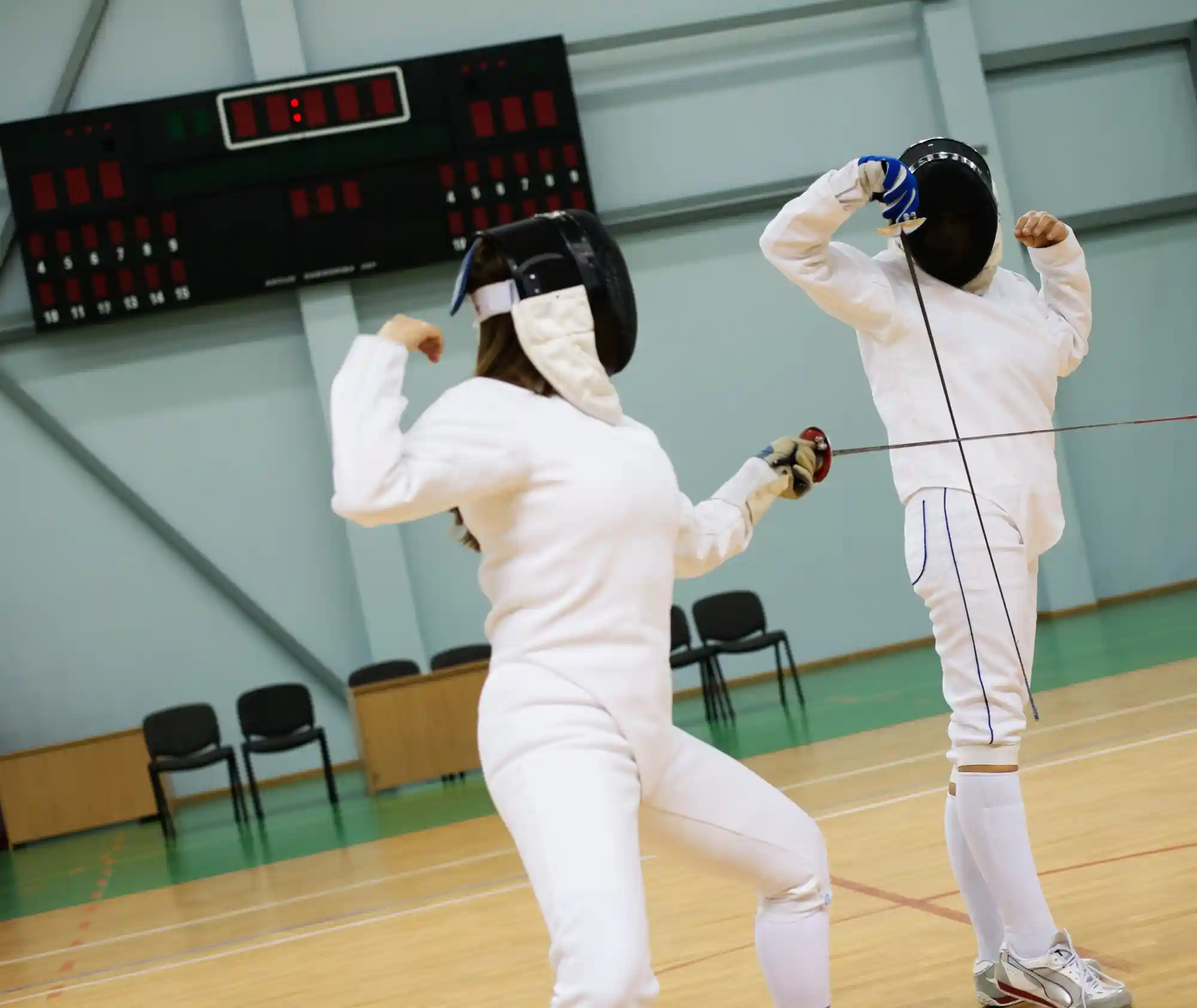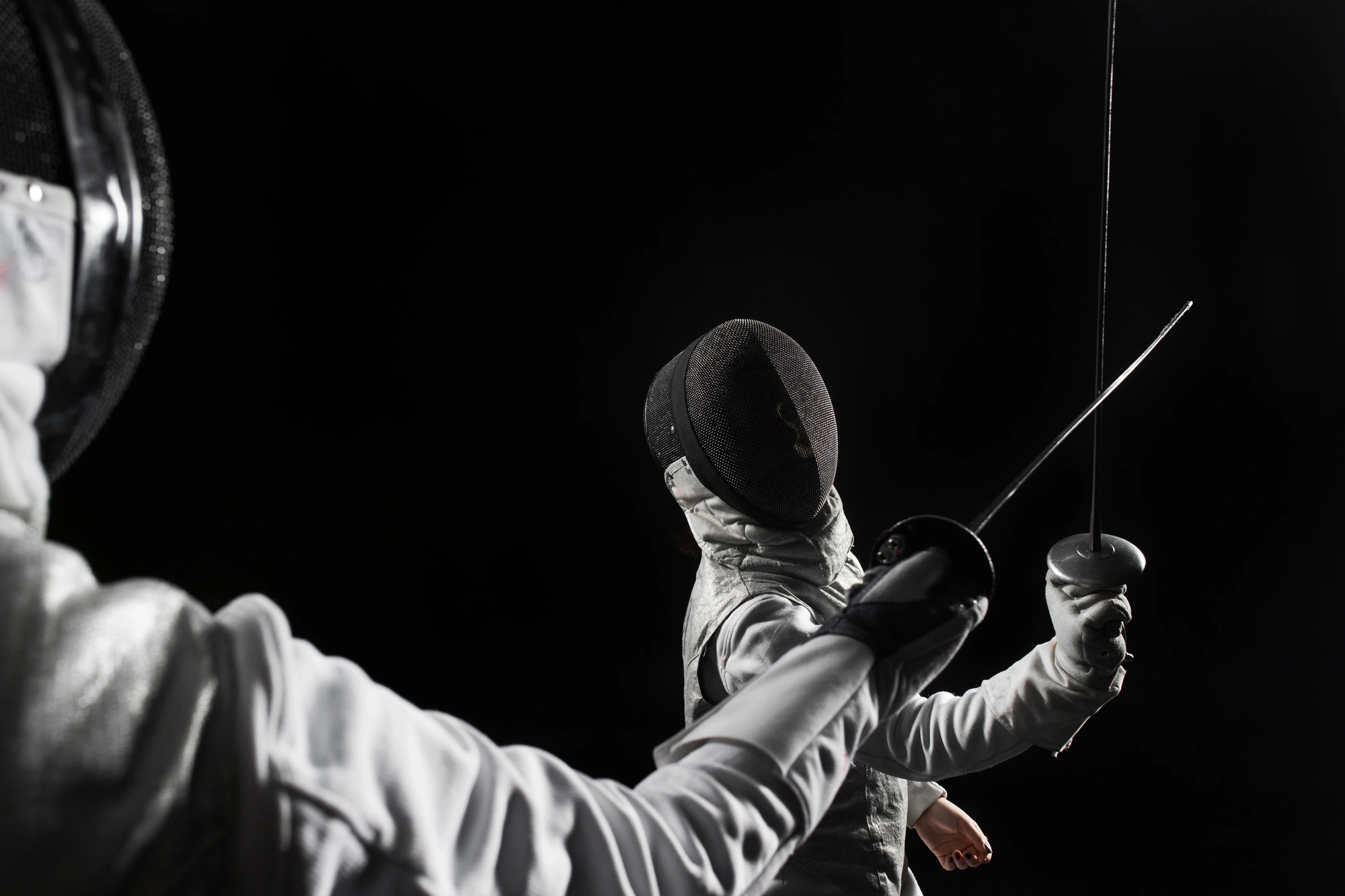We may earn revenue from the products available on this page and participate in affiliate programs. Learn more >
If you’re into fencing or just starting out, you’ve probably heard the term riposte thrown around. But what exactly is? A riposte is a counterattack.
So, the idea is that in fencing you have to attack and defend yourself, and when you defend yourself with a parry, you can’t stop there, you must immediately launch a counterattack known as a riposte.
What are the different types of ripostes?
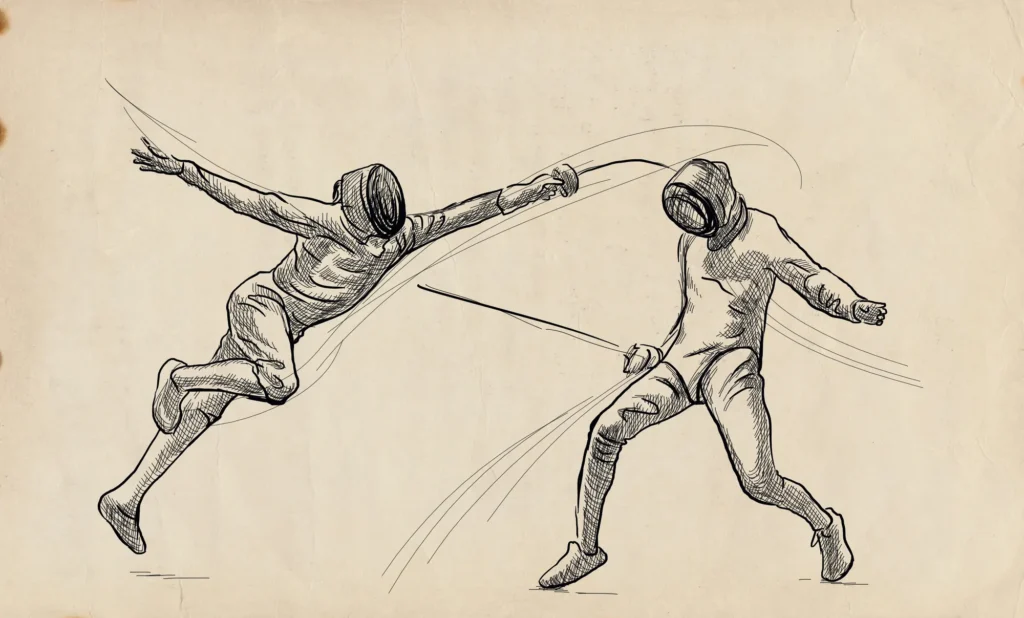
There are several types of ripostes in fencing, each with its own strategic use. Here are the main types.
1. Direct Riposte: A straightforward counterattack that follows the same line as the parry. It’s the quickest riposte and is effective when there is a clear opening.
2. Indirect Riposte: A riposte that changes the line of attack, often involving a disengage to avoid the opponent’s blade. Useful when the opponent attempts to block the direct line, creating an opening in another line.
3. Compound Riposte: A riposte that includes one or more feints before the final thrust. Effective against an opponent who tends to parry ripostes, as it can draw out their parry and then exploit the resulting opening.
4. Delayed Riposte: A riposte executed after a brief pause following the parry. Can catch the opponent off guard if they expect an immediate counterattack, and can be used to observe and react to their defensive response.
5. Counter Riposte: A riposte made after successfully parrying the opponent’s riposte. This keeps the pressure on the opponent and can be part of a series of exchanges where both fencers continuously attack and defend.
6. First Intention Riposte: A planned riposte that is executed without hesitation immediately after the parry. Effective for maintaining a fast tempo and catching the opponent while they are still recovering from their initial attack.
What are common mistakes to avoid when executing a riposte?
When executing a riposte in fencing, there are several common mistakes to avoid to ensure effectiveness.
Hesitating after a parry can give your opponent time to recover. Practice quick transitions from parry to riposte to exploit their vulnerability.
Missing the valid target area results in ineffective attacks. Focus on precision, aiming for the torso in foil, any part of the body in epee, and the upper body in sabre.
Extending too far or losing balance can leave you open to counterattacks. Maintain control and proper form, ensuring you can quickly return to the en garde position.
Avoid giving away your intentions with obvious movements. Keep actions fluid to prevent your opponent from predicting your riposte.
Not incorporating feints can make your riposte predictable. Use indirect or compound ripostes to create openings and keep the opponent guessing.
Misjudging the distance can result in ineffective strikes. Practice maintaining the correct distance and adjust your footwork to stay within range.
Failing to prepare for a counter-riposte or counterattack can leave you vulnerable. Always be ready to defend again by quickly returning to the en garde position and staying alert.
Key Factors
1. Timing and Speed: A riposte must be executed swiftly after a parry. Delaying can give your opponent time to recover or counterattack. Thats why it should be fast enough to catch your opponent off guard and capitalize on their momentary vulnerability.
2. Feints and Deception: Incorporate feints to mislead your opponent and create openings. Indirect or compound ripostes can help you avoid their parry and land a touch. Vary your riposte to keep your opponent guessing, making it harder for them to predict and defend against your actions.
3. Maintaining Balance and Distance: Maintain a balanced stance to ensure quick recovery and readiness for the next move. Overcommitting can leave you vulnerable to counterattacks. Adjust your distance appropriately to stay within effective striking range while being able to retreat or advance as needed.
4. Anticipating Counterattacks: Be prepared for a counter-riposte or counterattack from your opponent. Quickly return to the en garde position and stay alert to their movements. Have a plan for defending against potential counterattacks, such as preparing for a second parry if needed
By incorporating these strategies into your fencing, you can transform defensive maneuvers into powerful offensive move that turns the tide of any bout. Every riposte is an opportunity to showcase your skill, adaptability, and strategic thinking. Remember, fencing is not just about physical prowess.
Last Words
The riposte is a crucial element of fencing, transforming a defensive action into an offensive opportunity. Mastering the riposte is essential for any fencer seeking to control the bout and score touches.
You might also be interested in: The Best Fencing Shoes in 2025 (Epee, Foil, and Sabre)


